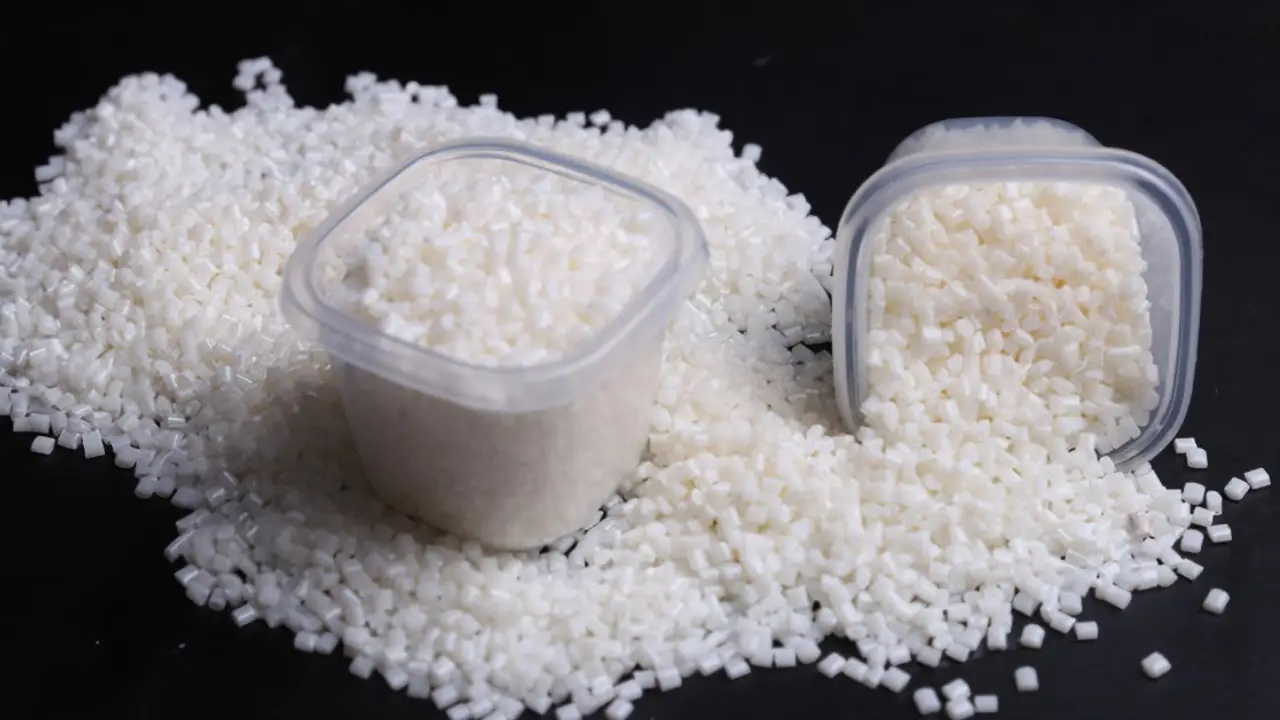Supplier of Acrylonitrile butadiene styrene

Descriptions of Acrylonitrile Butadiene Styrene (ABS)
Acrylonitrile Butadiene Styrene (ABS) is a durable and impact-resistant thermoplastic polymer widely used across various industries due to its exceptional strength, stability, and versatility. Composed of three monomers — acrylonitrile, butadiene, and styrene, this engineering plastic combines rigidity, toughness, and a glossy surface finish.
Its lightweight structure, combined with excellent mechanical and thermal properties, makes ABS polymer ideal for manufacturing automotive parts, consumer electronics, and construction materials. The following sections explain its composition, properties, applications, and production process.
What is ABS Made Of?
ABS is a copolymer composed of three main monomers, each contributing specific characteristics:
-
Acrylonitrile: Provides chemical resistance, stiffness, and heat stability.
-
Butadiene: Enhances toughness and impact resistance.
-
Styrene: Adds a glossy appearance and improves processability.
By combining these monomers, ABS achieves a balanced profile of rigidity, resilience, and surface quality — making it suitable for industrial, mechanical, and consumer applications. Manufacturers can also modify the ratio of monomers to engineer custom ABS grades for specialized uses.
Key Properties of Acrylonitrile Butadiene Styrene (ABS)
ABS plastic stands out for its excellent mechanical and thermal characteristics. Key properties include:
-
High Impact Strength: Resistant to physical shocks and mechanical stress, ideal for heavy-duty applications.
-
Thermal Stability: Performs reliably between -20°C and 80°C, suitable for moderate temperature environments.
-
Chemical Resistance: Resists degradation by oils, acids, and solvents.
-
Excellent Processability: Easily molded and extruded at relatively low temperatures (melting point ~105°C).
-
Attractive Appearance: Offers a smooth, glossy finish — ideal for aesthetic products.
These properties make ABS thermoplastic one of the most versatile materials in modern manufacturing.
Applications and Uses of ABS Plastic
ABS is widely used in automotive, electronics, construction, and consumer goods industries due to its strength and design flexibility.
1. Automotive Industry
ABS is used in dashboards, bumpers, mirror housings, and trim components. Its impact resistance and cost-efficiency make it an ideal choice for automotive interiors and structural parts.
2. Consumer Electronics
Used in the casings of televisions, computers, printers, and telecommunication devices, ABS ensures durability, precision, and aesthetic appeal.
3. Household Appliances
Commonly used in kitchen appliances, toys, and vacuum cleaner bodies, ABS offers toughness and resistance to wear — perfect for everyday products.
4. Construction and Plumbing
ABS pipes and fittings are widely applied in drainage and ventilation systems due to their durability, corrosion resistance, and long service life.
5. 3D Printing
ABS filament is among the most popular materials for 3D printing. It offers excellent printability, dimensional stability, and a polished finish, ideal for prototypes and industrial components.
Production Process of Acrylonitrile Butadiene Styrene (ABS)
The manufacturing process of ABS combines polymerization and emulsion techniques to achieve its unique balance of properties:
-
Polymerization of Acrylonitrile and Styrene: These monomers form a rigid base polymer.
-
Incorporation of Butadiene: Butadiene rubber is dispersed throughout the polymer to enhance flexibility and impact strength.
-
Emulsion Polymerization: Ensures even distribution of rubber particles, creating a consistent and tough material.
-
Extrusion and Pelletizing: The ABS resin is cooled, extruded, and cut into pellets, which are then shipped to manufacturers for molding into final products.
This controlled process results in a uniform, high-quality ABS resin with stable mechanical and chemical properties.
Environmental and Safety Considerations
ABS is generally considered safe and non-toxic for industrial and consumer use. However, sustainability and safety practices should be followed:
-
Recyclability: ABS is recyclable and can be reprocessed for various uses, supporting environmental responsibility.
-
Combustibility: It is flammable and may emit toxic fumes when burned; fire-safe handling is essential.
-
Proper Disposal: Used ABS products should be recycled whenever possible to reduce environmental impact.
As industries move toward greener solutions, recycled ABS continues to gain popularity as an eco-friendly engineering plastic.
Packaging and Transportation of ABS Resin
ABS is typically supplied in pellet form, packed in moisture-resistant bags or containers to prevent contamination during transport.
-
Packaging: 25 kg bags or jumbo bags.
-
Container Loading: Approximately 20–25 tons per 20-foot container, depending on packaging type.
-
Handling: Keep in a cool, dry, and ventilated area away from direct sunlight and heat sources.
Colored or additive-modified ABS grades are also available for specific industrial requirements.
Conclusion
Acrylonitrile Butadiene Styrene (ABS) is one of the most reliable and adaptable polymers in modern manufacturing. With its exceptional impact resistance, durability, and easy processability, it is an essential material in industries ranging from automotive and electronics to construction and 3D printing.
As the demand for sustainable materials rises, the recyclability and continuous innovation around ABS ensure its enduring relevance in future industrial applications.
Read Also: Polystyrene (PS)

